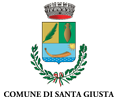Discover Romanesque: The time of Romanesque
Years 1251-1300
At Frederick II’s death, the fight between Guelphs and Ghibellines reprised, involving also the Tuscan communes. On the contrary, the French kingdom was being reinforced: under Charles of Anjou it reached southern Italy, subtracted to the Swabians, and the Spanish dynasties, who had proudly chased away the Saracens from the Iberian peninsula. In particular, the Aragonese power was getting stronger; with the conquest of Balearic islands in 1235, it had paved the way for a Mediterranean empire, which eventually led to obtain Sardinia.
1255: To ratify the peace of Versilia and the final submission of rebel squires from local households, Lucca founded the towns of Camaiore and Pietrasanta.
1255: the town of Lucca renewed its own statute related to silk manufacturing, since then representing a major activity in the town’s economy.
1258: the Pisans determined the end of the kingdom of Cagliari.
1259: in the lack of heirs, Adelasia’s death marked the end of the Giudicato of Torres.
1260: Nicola de Apulia, trained at Frederick II’s court, signed and dated the Baptistery pulpit, by then calling himself ‘Nicola Pisanus’.
1260: a list of tributes due to the pope by every local ecclesiastic authority of Lucca diocese (the Rationes Decimarum) provided a comprehensive picture of the existing ecclesiastic buildings.
1260: the battle of Montaperti arrayed Siena and Pisa to support the Ghibellines allied of Manfredi, king of Sicily, son of Frederick II, against the Florentine Guelphs.
1297- Boniface VIII assigned the Kingdom of Sardinia to James II of Aragon.
























